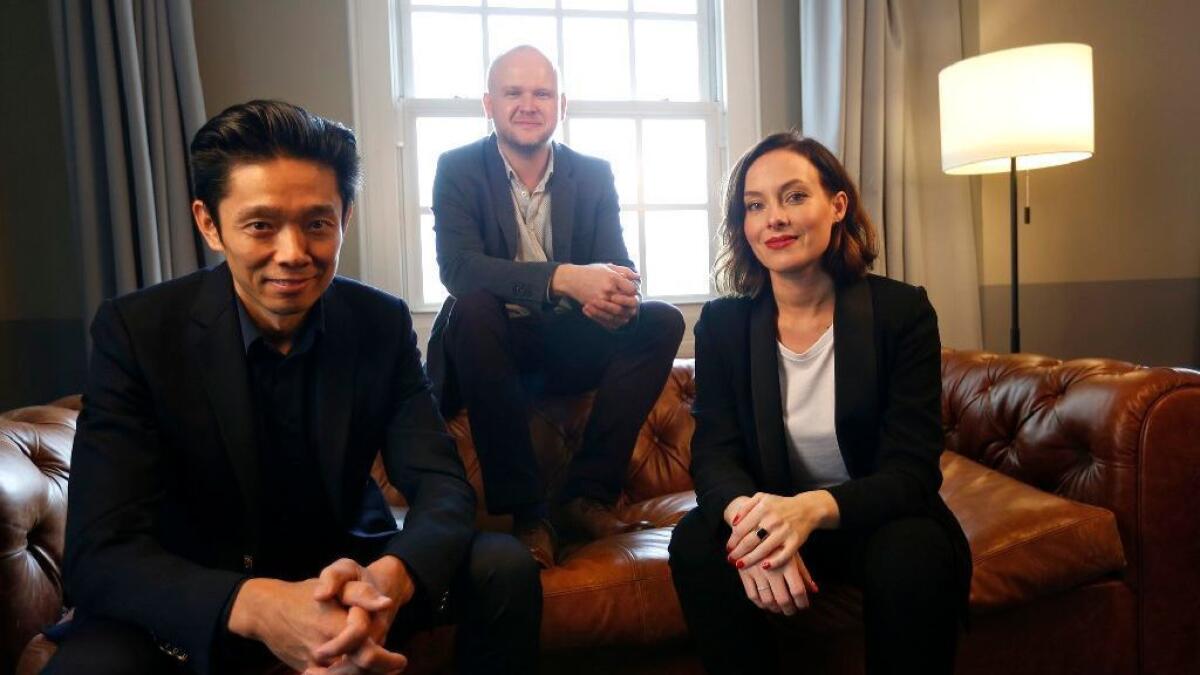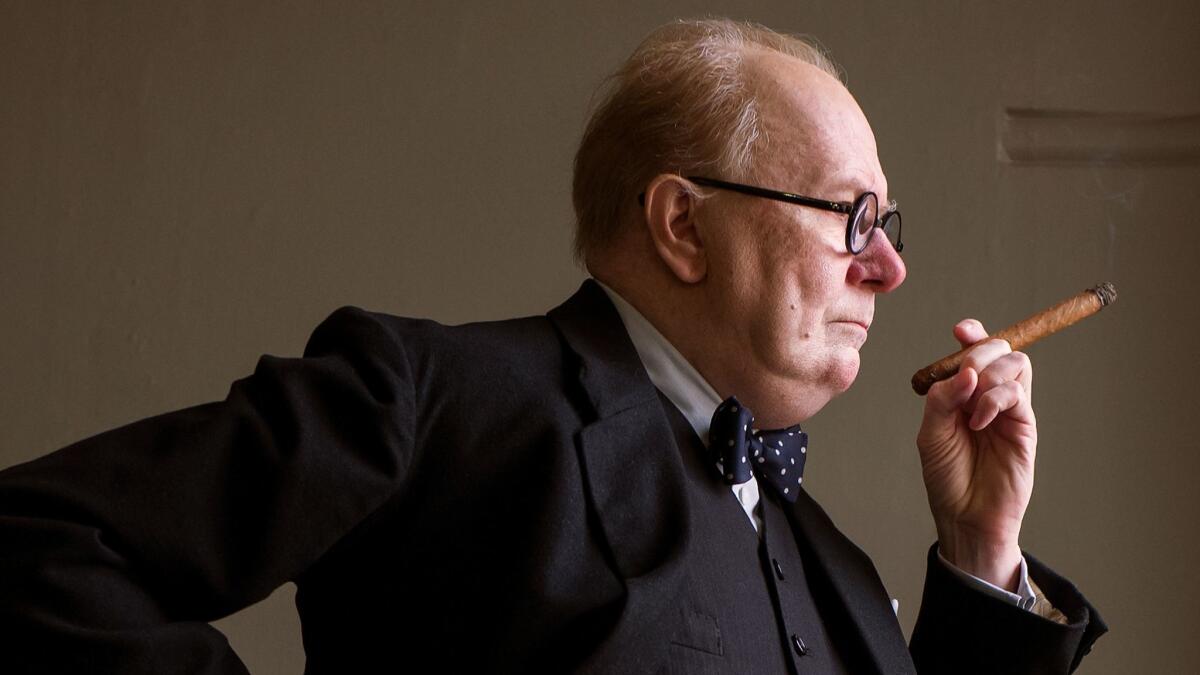Creating Winston Churchill took only a new neck, nose, chin and ears--along with a fat suit and wig

- Share via
Actor Gary Oldman’s portrayal of Winston Churchill in Joe Wright’s “Darkest Hour” has been so lauded, he’s the front-runner for the lead actor Oscar. But what would that dramatic performance have looked like if audiences didn’t believe they were actually watching the British prime minister? Oldman is the first to admit that his transformation from slight-of-build actor into portly, balding statesman was stunning. “When you look at me, do you see Winston Churchill?” he recently asked The Envelope.
Losing Oldman and finding Churchill would not have been possible without the prosthetics created by the Oscar-nominated team of Japanese makeup and hair designer Kazuhiro Tsuji (“Planet of the Apes,” “How the Grinch Stole Christmas”) and applied by makeup supervisor David Malinowski (“Breathe,” “Fantastic Beasts and Where to Find Them”) and makeup and hair artist Lucy Sibbick (“Pride and Prejudice and Zombies,” “Zoolander 2”). The trio of experts recently discussed the art and challenges of the task.
WATCH: Video Q&A’s from this season’s hottest contenders »
Kazuhiro, you had sworn off movies and were concentrating on creating your fine art pieces. What made you take this job?
Tsuji: I was very honored when Gary [Oldman] told me that he was interested in playing Churchill, and that he would take this job only if I would do the makeup. For most of my career, I had worked on comedy and fantasy movies. I’d grown tired of going to sets and working on actors who didn’t want to bother with the makeup. I first became interested in working in this field when I saw an article in Fangoria magazine about Dick Smith’s work on Hal Holbrook for the miniseries “Lincoln.” I never had the opportunity to work on a movie with a great story about a real historical figure. That’s why this was the perfect assignment for me.
Can you take us through the process of transforming Gary Oldman to Winston Churchill?
Tsuji: During the initial testing phase, I took photos of Gary and Churchill’s faces and played with them in Photoshop, changing the position of the eyes, the nose, the mouth, the chin — and it looked horrible. I decided not to show it to Gary and the film’s producer because if they had seen it, it would have killed the whole opportunity. So, I figured that the only solution was actually trying the makeup on him physically. I made a life cast of Gary’s face. Then I did lots of research, collecting photos and videos of Churchill. There is nothing similar about the two faces — Gary looks like a greyhound and Churchill resembles a bulldog. Since the part demanded a lot of subtle acting, I didn’t want to cover Gary’s face with a big mask.
We then constructed the body suits and I sculpted the neck, nose and chin and changed the shape of the ears. For the test makeup, we used a bald-cap but for the shoot, we shaved Gary’s head. We used a silicone-based makeup that is common in our industry. It’s often used as a hard gel, but I like to have lots of Plasticine in it so that it’s soft and doesn’t get in the way of the acting.
Malinowski: I looked at a lot of research material. Gary would send me the picture, and we would discuss. Kazu designed the makeup in L.A. and did some tests and once the tests were approved by the studio, Joe and Gary, the molds were sent to an effects company in Spain. They make soft silicone makeup so that when Gary moves, it all looks like it’s part of his skin.

Gary wanted to be in makeup throughout the eight days of rehearsals as well, so we were comfortable from Day 1 of shooting. I would be up around 1 a.m., and set everything up for Gary. He would get to the set around 3 or 4 in the morning. We’d shave his head and it would take just over three hours every day. Then, he would put on the fat suit and the costumes and wig. The shoot would usually last around 12 hours, and we took about an hour to take the makeup off, clean the wig and repaint every single piece. There were about 70 pieces, and we applied them on Gary every day during the 48 days of the shoot.
Sibbick: I would apply the makeup with David and put the wig on Gary and style it every day. The wigs were made in L.A. and I had to trim them and line them up. The most challenging aspect was managing the maintenance of the hair and makeup. Each wig lasted only two weeks. But Gary was so patient throughout the whole process. Sometimes, he had close-ups all day long, so we had to make sure he looked his best at all times. It was all day for three months because he was nearly in every scene of the movie, and it all had to look as if he wasn’t wearing prosthetic makeup.
What were your reactions when you first saw the final results on the big screen?
Tsuji: I was so amazed when I saw the rough cut last September. It was so good that I forgot about the makeup. Gary was the easiest actor I’ve worked with in my career. He really understands the importance of makeup and can sit still for hours. It was a once-in-a-lifetime experience.
More to Read
From the Oscars to the Emmys.
Get the Envelope newsletter for exclusive awards season coverage, behind-the-scenes stories from the Envelope podcast and columnist Glenn Whipp’s must-read analysis.
You may occasionally receive promotional content from the Los Angeles Times.










